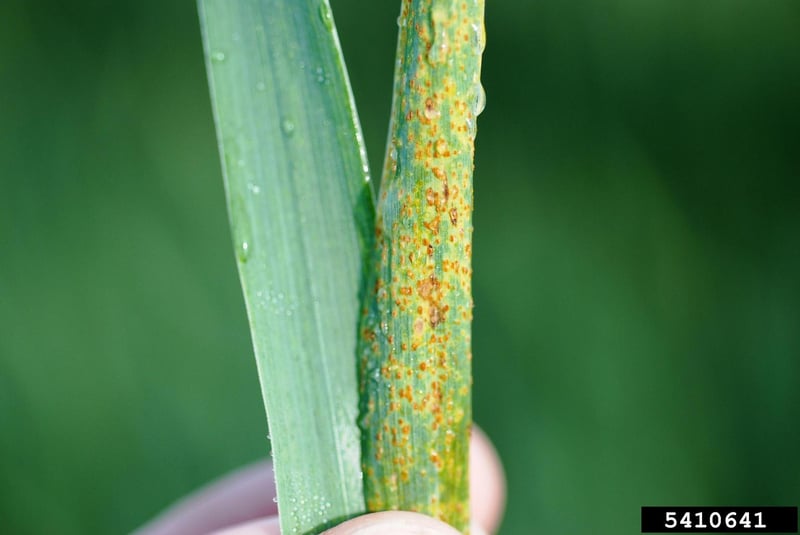January 12, 2023
By Victoria Marsh, Western Technical Sales Agronomist
This is a great time of year to be a wheat producer. Winter wheat producers— your wheat is in and you're probably ready for some much needed “down time”. For the spring wheat planters—you are still a ways off to plant but you might find yourself with some well-deserved breathing room. Now is a great time to prepare for whatever the 2023 growing season may throw your way.
Two issues that, if growing conditions are right, can really hurt your yields and harvesting operations this year are rust and lodging.
Rust is a tricky pathogen. Some years it doesn’t even come into the equation due to weather, but when it does it can be devastating. Rust is a fungus—a very hardy one at that—and can show up out of nowhere due to its overwinter capabilities on nearby plants. In the springtime, rust reproductive spores are formed and the wind will send millions of these into wheat fields from nearby fields and edge... or even from fields thousands of miles away! Keep in mind that even if your area didn’t have rust last year doesn't mean that the pathogen will not be in your area this year! Once the rust is on the plant the spore needs water on the leaf to germinate and then makes its way into the plant by penetrating the stomata or the plant cell wall. Once inside the plant the fungus grows by using the nutrients in the plant to thrive—stunting the growth of the plant. Rust will then begin to reproduce new spores in such abundance that it will rupture the plant wall. This is when you start to see the tell-tale signs of red/orange patches and chlorosis in the stems and leaves of the plant. One spore will make tens of thousands of new spores in a quick timeline—as quick as a few days but normally this cycle of infection to reinfection occurs in 14 days. These spores are then wind transferred to other plants nearby and far. It just takes one spore to infect a plant. Once rust is present and an infection of your stand is established it is very hard to regain control and keep your yields intact.

Photo Credit: Donald Groth, Louisiana State University AgCenter, Bugwood.org
A great tactic to avoid these loses is to prevent rust infections from occurring in your stands in the first place. This scan simply be accomplished by using a systemic fungicide that prevents the infection from occurring... like AZterknot.
AZterknot is an azoxystrobin based fungicide paired with Reynoutria extract (a plant derived biological). This amazing product provides a one-two punch to prevent rust infections. The azoxystrobin active ingredient provides systemic coverage in the plant that prevents any mitochondria respiration of spores. This means that if a spore lands on your wheat and it has been treated with AZterknot, the spore will be unable to germinate stopping the infection before it happens. Sounds great right? It gets better.
The Reynoutria extract in AZterknot, triggers the defense system in the plant to activate. One proven pathway of activation is that Reynoutria prompts the production of Salicylic Acid (SA). When produced, SA is a signal to the plant to prepare for impending stresses and to put-up defenses to infection. Studies have shown that this SA production results in increased cell wall strength, increased nutrient uptake, and increased root mass. In Vive Crop Protection’s own research studies using AZterknot on wheat showed increased plant size and root mass (below in the trial completed on wheat in 2022 in Aberdeen, Idaho).

So AZterknot is a 1-2 punch to rust. But wait there’s more! Vive’s studies are finding that it also helps reduce lodging in the field not only on wheat but also in corn. While the exact science of the result is still being researched, it is believed that the stronger cell walls as a result of the Reynoutria extract is to blame for this wonderful side effect.
So, as you go into your 2023 season, keep in mind that a F4-F6 spray of AZterknot—which mixes directly with fertility and would be an easy addition to your foliar program—will be extremely beneficial for rust prevention and overall plant health.
Learn more about AZterknot by visiting www.vivecrop.com/products/azterknot.
